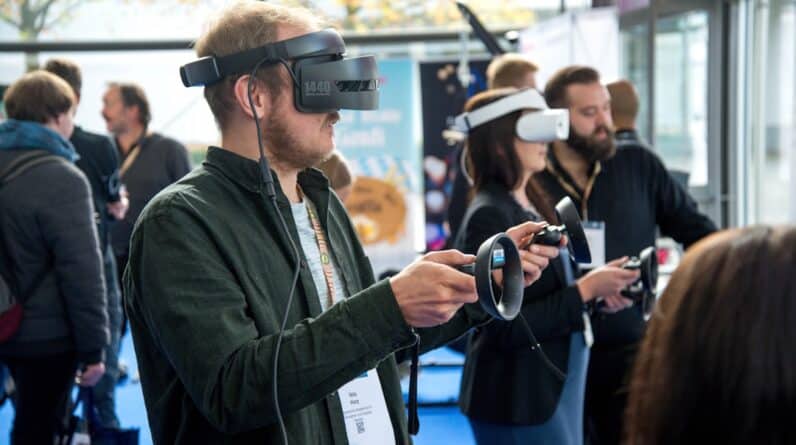As you step into the world of gaming, you may not realize just how much artificial intelligence (AI) has transformed the landscape. From the early days of simple algorithms that dictated the behavior of non-playable characters (NPCs) to the sophisticated systems that create immersive worlds today, AI has become an integral part of the gaming experience. It is not merely a tool for developers; it is a driving force that shapes how you interact with games, how stories unfold, and how challenges are presented.
The evolution of AI in gaming has opened up new avenues for creativity and innovation, allowing developers to craft experiences that are not only engaging but also deeply personalized. In this article, you will explore the multifaceted role of AI in gaming, delving into how it enhances realism, graphics, NPC behavior, and player immersion. You will discover how AI is not just about making games more challenging but also about creating environments that feel alive and responsive to your actions.
As you navigate through these sections, consider how AI has influenced your own gaming experiences and what the future may hold for this dynamic intersection of technology and entertainment.
Key Takeaways
- AI in gaming has revolutionized the industry by creating more realistic and immersive experiences for players.
- AI plays a crucial role in creating advanced graphics and visuals, making games visually stunning and engaging.
- AI-driven behavior and decision-making in non-player characters (NPCs) enhance the overall gaming experience by creating more dynamic and challenging interactions.
- AI-generated environments help in enhancing immersion by creating dynamic and personalized experiences for players.
- Despite its many benefits, AI in gaming also faces challenges and limitations that need to be addressed for further innovation and opportunities in the future.
The Role of AI in Creating Realistic Gaming Experiences
Simulating Real-World Physics
For example, in racing games, AI algorithms calculate the physics of speed, friction, and momentum, allowing for a driving experience that mimics reality. This level of detail enhances immersion, making players feel as though they are truly behind the wheel.
Dynamic Storytelling and Agency
AI also contributes to the narrative depth of games by enabling dynamic storytelling. As players make choices throughout their gameplay, AI systems analyze their decisions and adapt the storyline accordingly. This creates a unique experience tailored to their actions, ensuring that no two playthroughs are exactly alike. The ability of AI to respond to player choices not only heightens engagement but also fosters a sense of agency, allowing players to shape the game world in meaningful ways.
A Personalized Experience
In this way, AI serves as a bridge between the player and the game, crafting experiences that resonate on a personal level. By simulating real-world physics and enabling dynamic storytelling, AI systems create a sense of realism that draws players in and refuses to let go.
Advanced Graphics and Visuals in AI-Powered Games

As you delve deeper into the realm of AI-powered games, one cannot overlook the advancements in graphics and visuals that have accompanied this technological evolution. AI has revolutionized how graphics are rendered, enabling developers to create stunning visuals that push the boundaries of what is possible. Techniques such as deep learning and neural networks allow for real-time rendering of complex environments, resulting in breathtaking landscapes and intricate details that captivate your attention.
One notable application of AI in graphics is procedural generation, where algorithms create vast worlds with minimal input from developers. This means that as you explore a game, you may encounter unique terrains, weather patterns, and even wildlife that have been generated on-the-fly by AI systems. This not only enhances visual variety but also contributes to a sense of discovery and adventure as you traverse through these dynamically created environments.
The combination of advanced graphics and AI-driven content generation ensures that your gaming experience remains fresh and engaging, no matter how many times you revisit a title.
AI-Driven Behavior and Decision-Making in NPCs
The behavior of NPCs has long been a focal point in gaming, and AI has taken this aspect to new heights. Gone are the days when NPCs followed predictable patterns or reacted in simplistic ways. Today’s games utilize sophisticated AI algorithms to create characters that exhibit complex behaviors and decision-making processes.
As you interact with these NPCs, you may notice that they respond to your actions in ways that feel organic and believable. For instance, in an open-world RPG, NPCs might react differently based on their personalities or past interactions with you. If you choose to help an NPC in one quest, they may offer assistance later on or provide valuable information about hidden treasures.
This level of depth not only enriches the gameplay but also fosters emotional connections between you and the characters within the game. The unpredictability of NPC behavior keeps you on your toes, making each encounter feel unique and engaging.
Enhancing Immersion through AI-Generated Environments
Immersion is a key element of any successful gaming experience, and AI-generated environments play a significant role in achieving this goal. By leveraging machine learning algorithms, developers can create expansive worlds that feel alive and responsive to your actions. These environments can change dynamically based on various factors such as time of day, weather conditions, or even your character’s status within the game.
Imagine wandering through a forest where the foliage shifts with the wind or encountering wildlife that reacts to your presence. These elements are made possible through AI-driven environmental design, which enhances your sense of presence within the game world. The ability for environments to adapt and evolve based on your interactions creates a more immersive experience, allowing you to lose yourself in the virtual realm.
Personalized Player Experiences with AI

One of the most exciting aspects of AI in gaming is its potential for personalization. As you engage with different titles, AI systems can analyze your playstyle, preferences, and behaviors to tailor experiences specifically for you. This means that whether you prefer stealthy approaches or all-out combat, games can adapt their challenges and narratives to suit your unique style.
For example, an action-adventure game might adjust its difficulty level based on your performance in previous encounters. If you consistently excel at combat but struggle with puzzles, the game could offer more combat scenarios while simplifying puzzle elements. This level of customization ensures that you remain engaged without feeling overwhelmed or bored.
The result is a gaming experience that feels uniquely yours, enhancing both enjoyment and satisfaction.
Challenges and Limitations of AI in Gaming
Despite the remarkable advancements brought about by AI in gaming, there are still challenges and limitations that developers face. One significant hurdle is the balance between complexity and performance. While sophisticated AI systems can create rich experiences, they also require substantial computational power.
This can lead to performance issues on less powerful hardware or limit the scope of what can be achieved within a game. Additionally, there is the challenge of ensuring that AI behaves ethically and does not lead to unintended consequences within gameplay. For instance, if an NPC’s behavior becomes too unpredictable or aggressive due to poorly calibrated algorithms, it could frustrate players rather than enhance their experience.
Developers must navigate these complexities carefully to ensure that AI contributes positively to gameplay without detracting from it.
The Future of AI in Gaming: Innovations and Opportunities
Looking ahead, the future of AI in gaming is filled with exciting possibilities and innovations. As technology continues to evolve, we can expect even more sophisticated AI systems capable of creating richer narratives and more immersive experiences. Imagine games where every character has a unique backstory influenced by player interactions or environments that evolve over time based on collective player behavior.
Moreover, advancements in virtual reality (VR) and augmented reality (AR) will likely push the boundaries of what is possible with AI in gaming. As these technologies become more mainstream, AI will play a crucial role in creating seamless interactions between players and virtual worlds. The potential for social experiences within these environments is immense; players could collaborate with AI-driven characters or even other players in ways that feel natural and intuitive.
In conclusion, as you reflect on your own gaming experiences, consider how far we have come thanks to artificial intelligence. From enhancing realism to personalizing gameplay, AI has fundamentally changed how you engage with games. As we look toward the future, it is clear that the relationship between AI and gaming will continue to evolve, offering new opportunities for creativity and innovation that will shape the next generation of interactive entertainment.
One interesting article related to AI in gaming is “How Does AI Work with Humans” from AILab360. This article explores the ways in which artificial intelligence interacts with and complements human capabilities in various fields, including gaming. Understanding how AI can work alongside humans can provide valuable insights into how AI can be used to create more realistic gaming experiences that enhance player engagement and immersion.
FAQs
What is AI in gaming?
AI in gaming refers to the use of artificial intelligence technology to create more realistic and immersive experiences for players. This can include AI-controlled characters, dynamic environments, and adaptive gameplay.
How does AI enhance gaming experiences?
AI enhances gaming experiences by creating more realistic and challenging gameplay. AI-controlled characters can exhibit more human-like behavior, adapt to player actions, and provide a more dynamic and engaging experience.
What are some examples of AI in gaming?
Examples of AI in gaming include non-player characters (NPCs) that exhibit realistic behavior and decision-making, dynamic environments that respond to player actions, and adaptive difficulty levels that adjust based on player performance.
How is AI used to create more realistic gaming environments?
AI is used to create more realistic gaming environments by simulating complex behaviors and interactions. This can include realistic physics, dynamic weather patterns, and lifelike character animations.
What are the challenges of implementing AI in gaming?
Challenges of implementing AI in gaming include balancing realism with gameplay, optimizing performance for complex AI systems, and ensuring that AI-controlled characters provide a fair and enjoyable experience for players.






